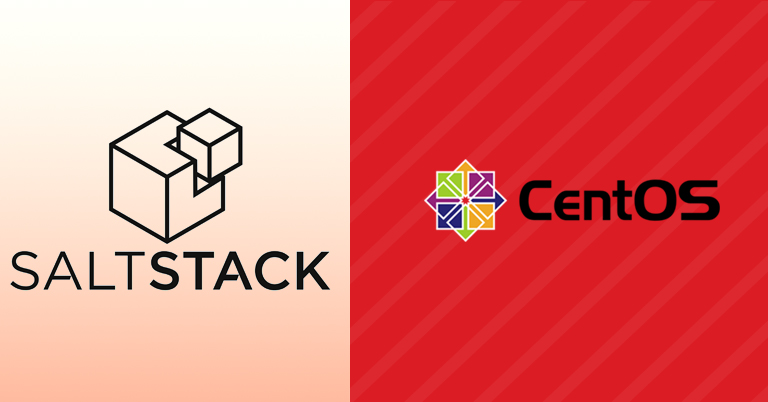Install SaltStack on CentOS
- Category : Linux Helpline (Easy Guide)
- Posted on : Jan 21, 2019
- Views : 2,493
- By : Barton S.

SaltStack is a open source configuration management used remote execution tool. With the use of remote execution system administrators can execute the programs and command from the master system named as salt to the agent system named as minions.Lets start
Requirements:-
Controller Machine (Salt-Master) :-
ip : 10.0.0.209
Node (Minion):-
ip: 10.0.0.206
hostname: minion1
Step 1 : Installing Salt-Master on controller machine:
Install the latest salt-master on your controller machine using YUM.
# yum install salt-master -yAfter the installation finishes, modify the configuration file as below:
# vi/etc/salt/masterFind the given line and replace :
# interface: 0.0.0.0to
interface: 10.0.0.209Find the given line and replace :
#hash_type: md5to
hash_type: sha256Then save and quit using :wq!
Start and enable the salt-master service
# systemctl start salt-master.service
# systemctl enable salt-master.serviceStep 2 :
Enable the default port of saltstack 4505-4506 in firewall.
# firewall-cmd --permanent --zone=public --add-port=4505-4506/tcp
# firewall-cmd –reloadStep 3 :
Install and configure the salt-minion on the nodes.
# yum install salt-minionAfter the installation finishes, modify the configuration file as below:
# vi /etc/salt/minionFind the given line and replace :
#master: saltto
master: 10.0.0.209Find the given line and replace :
#hash_type: md5to
hash_type: sha256Then save and quit using :wq!
Start and enable the salt-minion service
# systemctl start salt-minion.service
# systemctl enable salt-minion.serviceStep 4 : Test the Saltstack working
From the SaltStack master server, input the following command to show all available agents:
# salt-key -LIf everything was successful, you will see the agent server “minion1” listed in the “Unaccepted Keys” segment.
Accepted Keys:Denied Keys:Unaccepted Keys:minion1Rejected Keys:
After it we need to accept “minion1” using this command:
# salt-key --accept=minion1Step 5 : Test the Setup
# salt minion1 test.pingThe output show:
minion1:TrueTry the command also.
# salt minion1 cmd.run 'df -h'Thankyou. Now you are successfully installed and configured saltstack
Categories
Subscribe Now
10,000 successful online businessmen like to have our content directly delivered to their inbox. Subscribe to our newsletter!Archive Calendar
| Sat | Sun | Mon | Tue | Wed | Thu | Fri |
|---|---|---|---|---|---|---|
| 1 | 2 | 3 | 4 | 5 | ||
| 6 | 7 | 8 | 9 | 10 | 11 | 12 |
| 13 | 14 | 15 | 16 | 17 | 18 | 19 |
| 20 | 21 | 22 | 23 | 24 | 25 | 26 |
| 27 | 28 | 29 | 30 | 31 | ||
Recent Articles
-

Posted on : Jul 25
-

Posted on : Jul 07
-

Posted on : Apr 07
-

Posted on : Mar 19
Optimized my.cnf configuration for MySQL 8 (on cPanel/WHM servers)
Tags
- layer 7
- tweak
- kill
- process
- sql
- Knowledge
- vpn
- seo vpn
- wireguard
- webmail
- ddos mitigation
- attack
- ddos
- DMARC
- server load
- Development
- nginx
- php-fpm
- cheap vpn
- Hosting Security
- xampp
- Plesk
- cpulimit
- VPS Hosting
- smtp
- smtp relay
- exim
- Comparison
- cpu
- WHM
- mariadb
- encryption
- sysstat
- optimize
- Link Building
- apache
- centos
- Small Business
- VPS
- Error
- SSD Hosting
- Networking
- optimization
- DNS
- mysql
- ubuntu
- Linux








